- You are here:
- Home »
- Food Substitutes
- » Best Substitutes For Cornstarch
Best Substitutes For Cornstarch
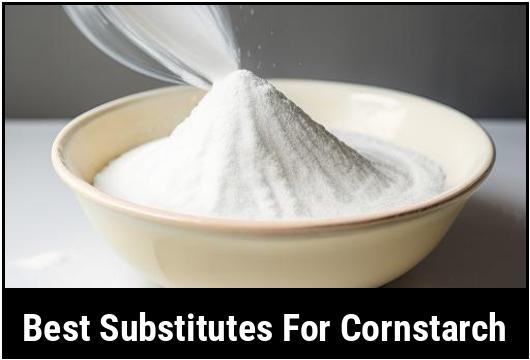
Cornstarch is a commonly used ingredient in cooking and baking. It is a fine powder made from corn and is often used as a thickening agent in various recipes. However, if you are out of cornstarch or looking for alternatives due to dietary restrictions or simply out of curiosity, there are several substitutes available that can provide similar results. In this article, we will explore different types of substitutes for cornstarch and the best options for various types of recipes.
Key Takeaways
- Cornstarch is a common ingredient used as a thickening agent in cooking and baking.
- If you run out of cornstarch or want to try something different, there are several substitutes available.
- Some common substitutes for cornstarch include flour, arrowroot powder, tapioca starch, potato starch, and rice flour.
- The choice of substitute depends on the recipe and desired outcome.
Why You Need A Substitute For Cornstarch
There are several reasons why you may need a substitute for cornstarch. Here are a few common scenarios:
-
Allergy or intolerance: If you or someone you are cooking for has an allergy or intolerance to corn, using cornstarch is not an option. In such cases, finding an alternative thickening agent becomes necessary.
-
Dietary restrictions: Cornstarch is not suitable for some diets, including those that are gluten-free or low-carb. Finding a substitute that fits your dietary needs allows you to create dishes that meet your requirements.
-
Out of cornstarch: Running out of cornstarch in the middle of preparing a recipe can be frustrating. Having knowledge of suitable substitutes ensures you can still achieve the desired consistency without compromising your dish.
Types Of Substitutes For Cornstarch
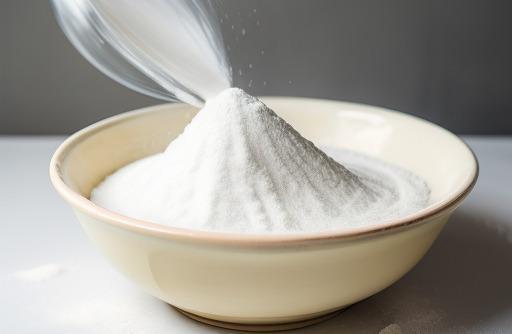
There are several types of substitutes for cornstarch, each with its own unique properties. Here are some common alternatives:
-
Flour: All-purpose flour is a readily available and versatile substitute for cornstarch. It is made from wheat, which gives it a slightly different flavor and texture compared to cornstarch. Flour is an excellent choice for thickening sauces, gravies, and soups.
-
Arrowroot powder: Arrowroot powder is derived from the root of the arrowroot plant. It has a neutral flavor and a similar thickening ability to cornstarch. It works well in recipes that require a clear and shiny finish, like fruit pie fillings or glazes.
-
Tapioca starch: Tapioca starch, also known as tapioca flour, is made from the cassava root. It is gluten-free and has a light texture when cooked. Tapioca starch works well in dishes that require a chewy and translucent consistency, such as pudding or bubble tea.
-
Potato starch: Potato starch is made from the starch extracted from potatoes. It is a gluten-free option and works well in recipes that require high heat or prolonged cooking, as it maintains its thickening ability better than other substitutes. Potato starch is ideal for gravies, stews, and sauces.
-
Rice flour: Rice flour is made from finely ground rice and has a mild flavor. It is a good substitute for cornstarch in both cooking and baking, especially in recipes that require a crispy coating or a light texture. Rice flour can be used in sauces, fried foods, and as a thickener in desserts.
Best Substitutes For Cornstarch
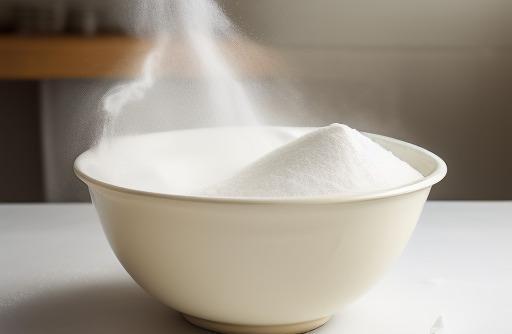
Now that we have explored the types of substitutes available, let’s dive into the best options for different types of recipes:
-
Sauces and Gravies: When thickening sauces and gravies, flour is a reliable substitute for cornstarch. To ensure a smooth consistency, make a slurry by mixing the flour with cold water before adding it to the hot liquid. This prevents clumping and ensures the flour is evenly distributed. Use approximately half the amount of flour as you would cornstarch, as flour has a stronger thickening power.
-
Fruit Pie Fillings: Arrowroot powder works exceptionally well as a substitute for cornstarch in fruit pie fillings. It creates a glossy finish and holds up well during baking. Replace cornstarch with an equal amount of arrowroot powder in your recipe.
-
Puddings and Custards: Tapioca starch is the perfect substitute for cornstarch in puddings and custards. It adds a slightly chewy texture and stays thick even after cooling. Use tapioca starch in the same amount as cornstarch or according to your recipe.
-
Heat-Resistant Recipes: When dealing with high heat or prolonged cooking, potato starch is a great substitute for cornstarch. It maintains its thickening ability better than other substitutes and is less likely to break down. Use potato starch in the same amount as cornstarch or according to your recipe.
-
Baking and Coating: Rice flour is an excellent substitute for cornstarch in baking and coating recipes. It provides a light and crispy texture, making it ideal for fried or breaded foods. For baking, replace cornstarch with rice flour in the same amount. For coating, mix rice flour with other spices or ingredients as directed by the recipe.
Choosing The Right Substitute For Cornstarch

Choosing the right substitute for cornstarch depends on the specific needs of your recipe. Consider the following factors when selecting a replacement:
-
Flavor: Some substitutes, such as flour, may have a noticeable flavor that can alter the taste of your dish. If maintaining the original flavor is crucial, opt for a substitute with a neutral taste, like arrowroot powder or tapioca starch.
-
Texture: Different substitutes can yield varying textures. For example, potato starch provides a slightly gummier texture compared to cornstarch, while tapioca starch adds a chewy consistency. Consider the desired texture of your dish and select a substitute that aligns with it.
-
Cooking Time and Temperature: Recipes that involve high heat or prolonged cooking, like slow-cooked stews or oven-baked dishes, require a substitute that can withstand these conditions. Choose a substitute like potato starch or arrowroot powder, as they maintain their thickening ability better than others under these circumstances.
-
Allergies and Dietary Restrictions: Take into account any allergies or dietary restrictions you or others may have. If you are gluten-intolerant or following a gluten-free diet, choose a substitute like arrowroot powder or tapioca starch. For those avoiding corn, alternatives such as potato starch or rice flour are suitable choices.
Cooking With Substitutes For Cornstarch
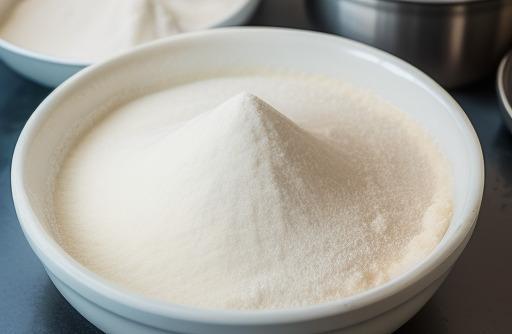
Cooking with substitutes for cornstarch requires a slightly different approach than using the original ingredient. Here are some tips to keep in mind:
-
Slurry Method: When using flour or other substitutes that can clump, it is best to make a slurry before adding them to hot liquids. To make a slurry, mix the substitute with a small amount of cold water or other cold liquid until smooth. Gradually add the slurry to the hot mixture, stirring constantly, to prevent clumping.
-
Heat Resistance: If your recipe involves high temperatures or prolonged cooking, use substitutes like potato starch or arrowroot powder. These options stay thick and maintain their texture better than others under heat.
-
Adjust Amounts: Depending on the substitute you choose, you may need to adjust the amount used in the recipe. Some substitutes have stronger thickening abilities than cornstarch, while others may not thicken as much. Start by using the same amount as cornstarch and adjust according to the desired consistency.
-
Taste and Texture: Keep in mind that different substitutes may alter the taste and texture of your dish. Experiment with small amounts before making larger batches to ensure the end result meets your expectations.
Recipes Using Substitutes For Cornstarch
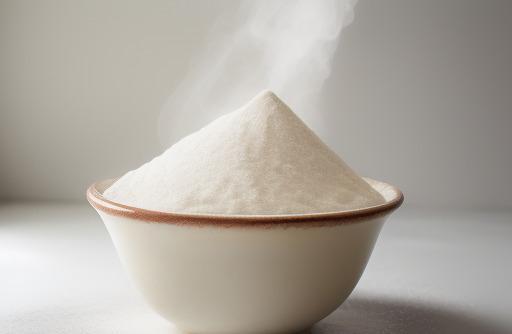
Here are a few recipe ideas that showcase the use of substitutes for cornstarch:
-
Gluten-Free Fruit Tart:
- Substitute arrowroot powder for cornstarch in the fruit filling to create a glossy finish and ensure it holds together during baking.
- Use a mixture of rice flour and almond flour for the crust to maintain a delicate and crisp texture.
-
Vegetable Stir-Fry:
- Use tapioca starch as a thickening agent for the sauce in your vegetable stir-fry. It will add a slightly chewy texture to the dish.
-
Gluten-Free Chocolate Pudding:
- Replace cornstarch with tapioca starch in your chocolate pudding for a creamy and thick texture that holds up well.
-
Oven-Baked Chicken Tenders:
- Mix rice flour with spices to create a crispy coating for your oven-baked chicken tenders. The rice flour adds a light and crunchy texture.
Feel free to get creative and explore various recipes using substitutes for cornstarch. Remember to adjust the amounts accordingly and consider the specific needs of each dish.
Storage And Shelf Life Of Substitutes
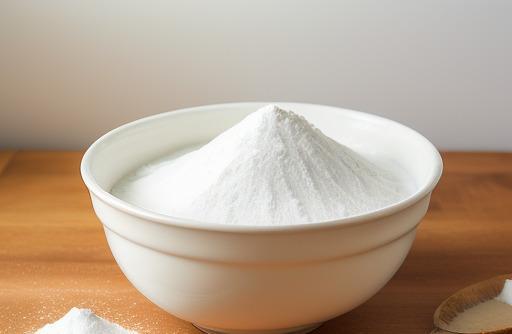
It is essential to store substitutes for cornstarch properly to maintain their quality and freshness. Here are some guidelines:
- Flour: Store all-purpose flour in an airtight container in a cool and dry place, away from direct sunlight. It can last up to one year in proper storage conditions.
- Arrowroot Powder: Keep arrowroot powder in an airtight container in a cool and dark place. It has a longer shelf life compared to some other substitutes, lasting up to two years.
- Tapioca Starch: Store tapioca starch in a cool, dry place in an airtight container. It can last up to two years if stored properly.
- Potato Starch: Keep potato starch in a cool and dry place, away from moisture. It can last up to two years in proper storage conditions.
- Rice Flour: Store rice flour in an airtight container in a cool and dry place, away from moisture and insects. It can last up to six months to one year depending on storage conditions.
Conclusion
Having a substitute for cornstarch on hand is useful for various cooking and baking scenarios. Whether you have dietary restrictions, allergies, or simply run out of cornstarch, there are several alternatives to choose from. From flour to arrowroot powder, tapioca starch to rice flour, each substitute offers its own unique properties and benefits. Consider the specific needs of your recipe, including flavor, texture, and cooking conditions, when selecting the best substitute. With the right choice and a few adjustments, you can achieve the desired consistency and create delicious dishes without cornstarch. So, experiment, explore, and have fun cooking with substitutes for cornstarch!
Pro Tip: To avoid clumping when using flour or substitutes that tend to clump, make a slurry by mixing the substitute with a small amount of cold liquid before adding it to hot mixtures. This will ensure a smooth consistency and prevent clumps from forming.
FAQS
What Are Some Good Substitutes For Cornstarch In Cooking And Baking?
Some of the best substitutes for cornstarch include arrowroot powder, potato starch, tapioca flour, rice flour, and even wheat flour.
How Does Arrowroot Powder Compare To Cornstarch As A Thickening Agent?
Arrowroot powder is a great alternative to cornstarch, as it has a similar texture and thickening power without the possibility of leaving a starchy or gummy residue. It is also gluten-free, making it a great option for those with dietary restrictions.
Can Tapioca Flour Be Used As A Substitute For Cornstarch In All Recipes?
Tapioca flour can be used as a substitute for cornstarch in many recipes, but it may not work as well in recipes that require a longer cooking time, such as custards or pudding. It also has a slightly sweeter taste, which may affect the overall flavor of a dish.
How Does Potato Starch Compare To Cornstarch In Terms Of Texture And Flavor?
Potato starch is similar to cornstarch in texture and thickening power, but has a slightly different flavor profile. It is also a good choice for those with gluten intolerance or celiac disease since it is naturally gluten-free.
Can Wheat Flour Be Used As A Substitute For Cornstarch In Recipes?
While wheat flour can be used as a substitute for cornstarch, it is not completely interchangeable and may not produce the same results. Wheat flour also has a lower thickening power than cornstarch and may result in a denser or less smooth texture. It is best to use wheat flour as a last resort and adjust the amount accordingly.
Sources
About the Author Jenny
I'm Jenny, a housewife with an unwavering passion for food. My culinary journey began with my grandmother's kitchen, and it's now a full-fledged food blog. I've turned my love for cooking into a creative outlet, sharing recipes and stories with a global community of fellow food enthusiasts. It's proof that being a housewife can also mean pursuing your passions and savoring life's delectable moments.
